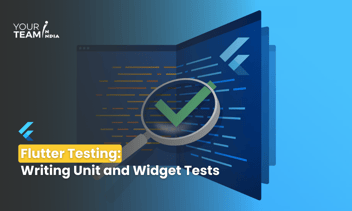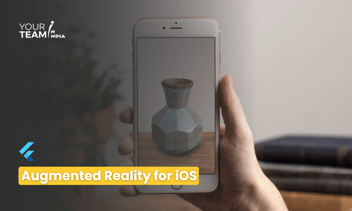Quick Summary: Dive deep into the lifecycle of Flutter widgets with this comprehensive guide. Explore the intricacies of widget creation, initialization, updating, and disposal, gaining insights into how widgets interact and evolve throughout the lifespan of a Flutter application.
Introduction
- The significance of understanding the lifecycle of Flutter widgets.
- Overview of Flutter as a reactive framework.
- The concept of a widget tree and how it influences the widget lifecycle.
Widget Lifecycle Phases
- Initialization Phase
- The StatefulWidget and StatelessWidget initialization process.
- The role of the createState method in creating the widget's state.
- Setting up initial data and configurations.
|
// Example: Initialization phase in StatefulWidget |
Build Phase
- The build method as the heart of widget rendering.
- Rebuilding the widget tree in response to changes.
- Importance of keeping the build method pure.
|
// Example: Build phase in StatefulWidget |
State Changes and Rebuilding
- Handling state changes triggers widget rebuilds.
- The significance of setState for triggering rebuilds.
- Optimizing performance with const constructors and AutomaticKeepAliveClientMixin.
|
// Example: Handling state changes and triggering rebuild |
Deactivation and Disposal Phases
- Deactivation Phase
- Invoked when a widget is removed from the widget tree.
- The deactivate method for cleaning up resources.
- Scenario: Navigating away from a widget.
|
// Example: Deactivation phase in StatefulWidget |
Dispose Phase
- Invoked when a StatefulWidget is permanently removed.
- The dispose method for releasing resources.
- Scenario: Closing connections, disposing controllers.
|
// Example: Dispose phase in StatefulWidget |
Widget Lifecycle in StatelessWidget
- Immutable Nature of StatelessWidget
- Stateless widgets don't have initState or dispose methods.
- build method remains the primary means of rendering.
- Rebuilding occurs when the parent widget rebuilds.
|
// Example: Lifecycle in StatelessWidget |
Use Cases and Best Practices
- Handling Asynchronous Operations
- Properly handling asynchronous operations in initState.
- Using FutureBuilder for seamless UI updates.
|
// Example: Handling asynchronous operations in initState |
Optimizing Performance
- Leveraging const constructors for immutable widgets.
- Using AutomaticKeepAliveClientMixin for preserving state.
|
// Example: Using const constructors for performance |
Let's create a simple example to illustrate the widget lifecycle in a StatefulWidget. In this example, we'll create a widget that increments a counter each time the user interacts with it. We'll utilize the key lifecycle methods: initState, build, dispose, and demonstrate how the widget reacts during state changes.
|
import 'package:flutter/material.dart'; |
In this example:
- initState: Called when the widget is created.
- build: Called when the widget is rebuilt.
- deactivate: Called when the widget is removed from the widget tree.
- dispose: Called when the widget is permanently removed.
Open your console or log output to observe the lifecycle messages as you interact with the app. This example demonstrates the basic lifecycle of a StatefulWidget and helps you understand when each lifecycle method is invoked.
Conclusion
- Summary of key phases in the Flutter widget lifecycle.
- The importance of understanding lifecycle for efficient app development.
Encouragement to explore advanced topics like InheritedWidget and GlobalKey.
Ready to elevate your Flutter app design? Unlock the full potential of Flutter layouts with our professional Flutter developers.








